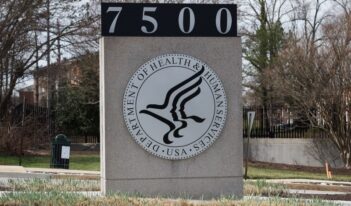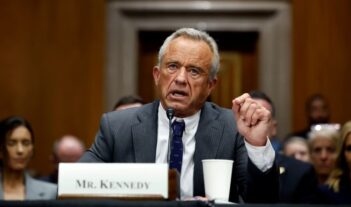
HHS proposes to sunset thousands of regulations, endangering the public and the health care industry.
In a blunt deregulatory maneuver, the Trump Administration in its waning days is attempting to adopt a regulation that, if finalized, would have a cataclysmic effect on the public health and consumer protection regulatory landscape.
In early November, the U.S. Department of Health and Human Services (HHS) proposed a rule that would impose an automatic sunset provision on all regulations adopted and administered by HHS, its subagencies, and virtually all of its programs. HHS set a 30-day comment period, which ended on December 4, 2020, for comments on the proposed rule.
Under this proposal, thousands of regulations would automatically expire ten years after their enactment, while many of the rules currently on the books would sunset as well, unless individually reviewed and validated again by HHS within a two-year window.
The proposed rule will be costly for the agency and, ultimately, for the public.
According to HHS’s own estimates, reviewing the affected regulations could take up to 22,000 hours in the first two years, cost the department between $10 million and $25 million, and engage almost 100 full-time employees over ten years. These costs would hamstring departmental resources. Even HHS acknowledges “the risk that a regulation could expire because the Department inadvertently did not assess or review it” as well as “a risk that small entities could be adversely impacted if a regulation that has a positive economic impact … expires because the Department failed to review it.”
HHS should not be so cavalier about beneficial regulations slipping through the cracks nor about the ripple effects that such actions would have on individuals and businesses.
The proposed rule—which would offer no explicit public health benefits—threatens the rescission of thousands of meaningful, science-based regulations, including those concerning food safety and transparency, consumer protections, pharmaceuticals, and health care programs. It also risks diverting agency resources to the point that revising or creating new regulations to further public health would be extremely difficult.
But perhaps that is the desired result.
In addition to being a questionable use of agency resources, this proposed rule would likely violate the Administrative Procedure Act (APA). Under the APA, an agency may only rescind a final rule or change direction with cause. In contrast, the rules targeted by HHS’s proposal would, in many cases, be rescinded due to the department’s failure to act.
Furthermore, the U.S. Supreme Court has held that the same arbitrary and capricious standard applied to enacting regulations also applies to rescinding regulations. Generally, an agency rule will be “arbitrary and capricious” if an agency fails to consider alternatives, overlooks important aspects of the problem it seeks to address, or offers explanations for the rule against the evidence.
The recent rule proposal would almost certainly be arbitrary and capricious. It offers vague and inadequate explanations as to the need for the rule and establishes arbitrary time periods in which a review and re-justification must occur. It fails to consider alternatives that would be less extreme and cumbersome to phase out antiquated regulations, including, for example, the annual regulatory review process every agency conducts.
The proposed rule also overlooks, or at the very least undervalues, residual harms imposed on stakeholders, particularly small businesses and vulnerable populations—two groups that ordinarily lack the resources to keep up with an aggressive calendar for such sunsets or to lobby the agency to review them.
Furthermore, the statutory grounds for this proposed rule are shaky at best. For example, the proposal cites statutory authorities for HHS’s existing regulations as a basis for the measure, such as provisions in the Federal Food Drug and Cosmetic Act or the Social Security Act, which authorize either HHS or one of its sub-departments to create, change, and rescind rules related to specific statutory objectives. HHS then extrapolates that it has authority for a wholesale default scheme that would rescind thousands of regulations, without any apparent individualized review of each properly adopted regulation.
Although the proposal contains vague provisions that purport to exempt measures that are subject to certain statutory requirements, some regulations adopted under these requirements could still result in automatic sunsetting, if the statute affords the agency some discretion.
Moreover, the U.S. Congress regularly includes sunset provisions in statutes, and can do so anytime it likes. Under standard principles of statutory interpretation, the absence of such provisions in statutes likely suggests that Congress intended for these regulations to become a part of a permanent regulatory framework.
The timing of HHS’s proposed sunsetting rule is as problematic as its substance.
First, HHS published the proposed rule the day after Election Day while the nation’s attention was split between the presidential and congressional elections and the devastating COVID-19 pandemic.
Second, the proposal originally had a 30-day comment period. Given the complexity and reach of the proposed rule, 30 days was completely inadequate for stakeholders to respond to the proposed rule. The short comment period and lack of a salient explanation suggest political motivations for the rush. On a call with the media, HHS spokespeople also reportedly indicated that the intention is to finalize the proposal before Inauguration Day.
Indeed, concern about the 30-day comment period was resounding at a recent public meeting on the proposed rule. Speakers called on HHS to withdraw the rule entirely, extend the notice-and-comment period to allow stakeholders more time to respond, or do both. Stakeholders from various industries—including state attorneys general, trade and professional associations, and science-based research organizations, among others—have urged HHS to extend the comment period from between 60 days to 180 days or abandon the rule altogether.
Considering that HHS Chief of Staff Brian Harrison has hailed this proposal as “the boldest and most significant regulatory reform effort ever undertaken by HHS,” the timetable of this rule and its relatively quiet rollout seem mismatched, and the request for public comment seems hasty.
Because of the breadth of stakeholders that this proposed rule impacts, HHS should prioritize public and technical regulatory input and allow itself sufficient time to consider thoughtfully all submitted comments.
If finalized and carried out, this rule would destabilize the health care regulatory framework. It would create uncertainty as to whether regulations will expire and will hamstring agency resources, directly and indirectly impacting industry and the public’s health and safety.
Rushing this sweeping one-size-fits-all approach to deregulation—fraught with legal and logistical problems—is reckless. Doing so is taking a battle axe to the United States’ critical consumer and public health protections when a scalpel would do.




